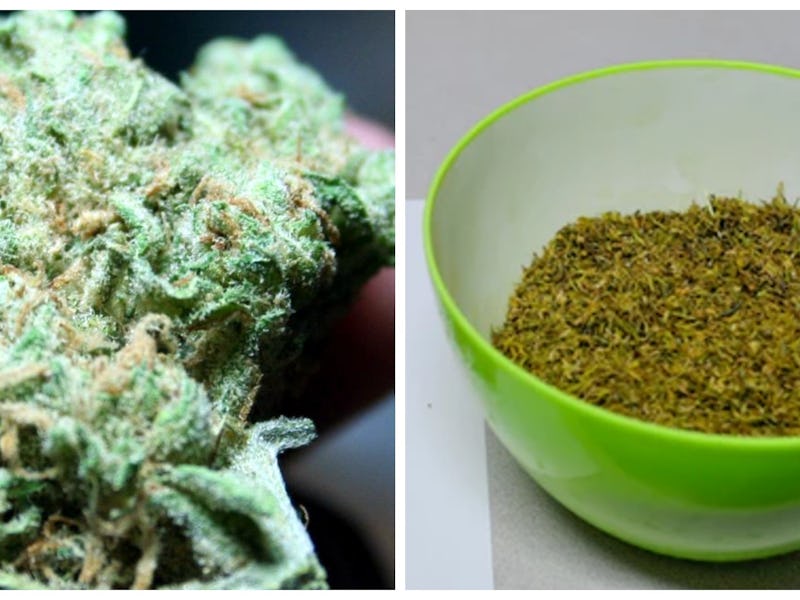There’s good news and bad news about the United States government and its official brand of weed. First, the good news: The government supplies scientists across the country with the marijuana to conduct research on the effects and potential therapeutic uses of weed. The bad news? This weed, which looks nothing like regular marijuana, is bunk.
Yes, it looks like the long-held cultural belief that the U.S. government worked exclusively with incredible weed, a notion put forth by timeless films such as Half Baked, is wrong. It’s another hit to the American psyche.
But back to the scientists, who are very upset, because studying government-supplied weed is unlikely to yield results that are useful to anybody.
A recent report by PBS Newshour featured a sample of the odd-looking marijuana supplied by the U.S. National Institute on Drug Abuse to Sue Sisley, a researcher studying the effect of medical weed on military veterans with PTSD. It certainly doesn’t look like marijuana sold on the street or in dispensaries, which is normally a tantalizing green and fuzzy. Government weed is decidedly off-color, filled with stems, and resembles grass or dried rosemary leaves.
“It doesn’t look like cannabis,” Sisley said in the interview. “It doesn’t smell like cannabis.”
What most weed actually looks like.
Sisley also noted that NIDA’s marijuana, all of which is grown at a single 12-acre government-run facility at the University of Mississippi, has a maximum of 13 percent THC, whereas weed on the street typically contains 19 percent. Her own tests on the NIDA weed show that it can contain as little as 8 percent THC. In an interview with the Washington Post, marijuana critic Jake Browne said that Sisley’s sample was “not a usable form of cannabis.”
Marijuana sold on the street usually consists of flowers; government-supplied weed includes the stems and leaves, as well.
Determining what makes cannabis “usable” depends, of course, on what it is used for. While NIDA’s weed is useful as a source of cannabinoids — scientists can extract THC from it and related compounds and test their effects in the lab — it’s not especially useful for studying how marijuana affects people because it simply isn’t the same thing that people smoke. This gives reasons to doubt the validity of the data from research such as Sisley’s, especially if it’s meant to be applied to public health policies.
Many other scientists have expressed frustration about this issue. In an interview with The Chronicle of Higher Education in February, Nicholas Lovrich, professor emeritus of political science at Washington State University and chair of its Cannabis Committee on Research and Outreach, said, “We can’t get very far with the Mississippi weed. That’s just the reality.” And University of California San Diego psychiatrist Ty Brumback, Ph.D., who studies the effects of the drug on adolescent brain development, told Inverse in a previous interview that over the last 20 years, “the levels and the concentrations of THC have increased exponentially. The supply from the University of Mississippi is not the same as what people can get on the street. There’s a disconnect, there.”
There is one thing the government’s weed has in common with regular marijuana: The PBS report also revealed that NIDA’s supply contained traces of mold, which has also been detected in California medical marijuana samples.
It’s unclear whether the scientists’ supply is going to improve anytime soon. In 2016, the Drug Enforcement Administration announced it would loosen its regulation of marijuana supply, thereby opening up the monopoly that the University of Mississippi had on cultivation to other growers, but so far no licenses have been awarded.
